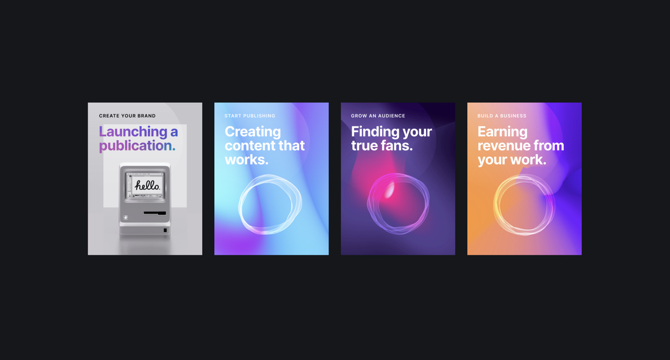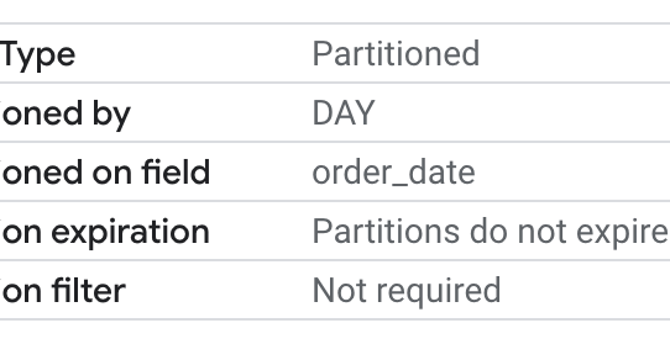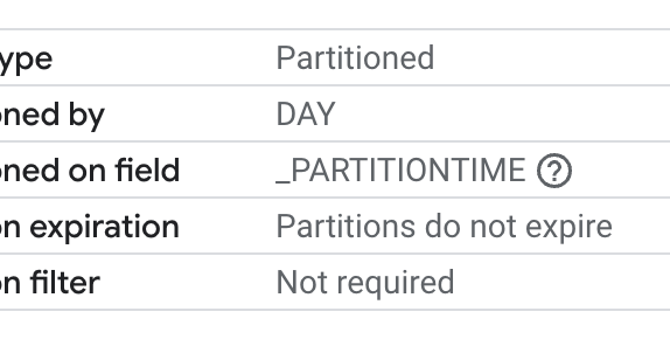Programming News
Javacodegeeks
172

Image Credit: Javacodegeeks
[DEALS] Internxt Cloud Storage: Lifetime Subscription (85% off) & Other Deals Up To 98% Off – Offers End Soon!
- Fresh offers are available on the Deals store including Internxt Cloud Storage: Lifetime Subscription at 85% off.
- Other deals on offer include Mail Backup X Individual Edition, Project Manager Certification & Exam Prep, 1min.AI, and more.
- Discounts range from 72% off to 96% off on various subscriptions like Sterling Stock Picker, Ethical Hacking Bundle, and BonoHost Unlimited Plan.
- To stay updated on the latest deals and skill development resources, users can subscribe to the newsletter for free eBooks and valuable content.
Read Full Article
10 Likes
Dev
30

Image Credit: Dev
How Server-Side Rendering Helps Your Angular SPA
- Server-Side Rendering (SSR) in Angular means pre-rendering HTML on the server, improving performance and visibility.
- Angular Single Page Application (SPA) renders entirely in the browser, leading to slower first load times and suboptimal SEO.
- Angular Universal (SSR) pre-renders the first view on the server, improving load times and SEO, making it ideal for public websites and SEO-critical applications.
- SSR with Angular Universal offers better SEO, faster initial rendering, and is recommended for public-facing applications or those requiring strong SEO performance.
Read Full Article
1 Like
Ghost
336

Image Credit: Ghost
📸 Envisioning your images
- Photos have been used since the 1800s to capture memories, share information, and express art.
- Combining images with words can significantly enhance reader engagement.
- This week's newsletter discusses the importance of using media to enhance content, finding free photos, and selecting the right images.
- Images play a crucial role in boosting clicks, conversions, and overall engagement on a website.
- Utilizing visually appealing and educational media can make your content stand out and attract readers.
- Incorporating relevant file names, titles, and descriptions to images can improve search engine optimization.
- Choosing the right images helps in guiding readers and creating a satisfying experience while perusing content.
- High-quality and unique images contribute to building trust with the audience and enhancing word-of-mouth marketing.
- The majority of people are visual learners, making the use of images in content more engaging.
- Selecting personalized, high-quality, and emotionally resonant images is essential for portraying brand identity and connecting with readers.
Read Full Article
20 Likes
Medium
123

Image Credit: Medium
CSS Grid Problems That Made Me Want to Quit Coding (And How I Actually Fixed Them)
- The article discusses the frustrations and challenges of working with CSS Grid layouts, particularly in real-world projects.
- Issues like browsers rendering grid layouts differently, mobile responsiveness challenges, and alignment inconsistencies are highlighted.
- Common problems like items ending up in random places, weird spacing, and misalignments are addressed with practical solutions.
- The importance of proper grid setup, avoiding typos, and using correct position methods is emphasized.
- Tips for handling spacing, alignment, and mobile versions effectively are shared to improve grid layout development.
- Dealing with nested grids, unexpected behaviors, and debugging techniques using tools like Firefox's Grid Inspector are discussed.
- Key insights include understanding grid lines, breaking layouts into smaller grids, and utilizing tools like CSS Grid generators.
- Readers are encouraged to share their own CSS Grid challenges and lessons learned, fostering a sense of community and shared experiences.
- The article concludes with tips for smoother grid layout development and a call to embrace the learning curve of working with CSS Grid.
- Overall, the piece offers practical advice, real-world examples, and tools to help developers navigate and conquer CSS Grid challenges.
- For quick grid layouts, a CSS units converter calculator is recommended as a tool to streamline the coding process and avoid syntax mistakes.
Read Full Article
7 Likes
Discover more
- Software News
- Web Design
- Devops News
- Open Source News
- Databases
- Cloud News
- Product Management News
- Operating Systems News
- Agile Methodology News
- Computer Engineering
- Startup News
- Cryptocurrency News
- Technology News
- Blockchain News
- Data Science News
- AR News
- Apple News
- Cyber Security News
- Leadership News
- Gaming News
- Automobiles News
Medium
274

Starting My AI Journey: Why I Began with Python
- Python is considered the 'universal language' of AI and machine learning, making it a popular choice for beginners entering the field.
- Starting with Python, even without a technical background, can provide the necessary foundation to understand AI concepts and build intelligent systems.
- The journey into AI is described as a process of continuous learning, embracing challenges, and using tools like ChatGPT for assistance in debugging and learning.
- While Python is just the beginning, it is seen as a powerful initial step towards exploring the possibilities of AI and technology in creating meaningful solutions.
Read Full Article
16 Likes
Medium
247

Image Credit: Medium
Data Preprocessing – The Unsung Hero of Machine Learning (Part 2)
- Data preprocessing is essential for machine learning as it involves cleaning, organizing, and preparing raw data for model training.
- Preprocessing is crucial as it ensures that data is accurate and reliable for model building, preventing issues like missing values, inconsistencies, unseen categories, and outliers.
- Key steps in data preprocessing for tabular data include data cleaning (handling missing values, correcting inconsistencies), data transformation (encoding categorical data, feature scaling), feature engineering, outlier detection, and handling imbalanced data.
- By following these preprocessing steps, data scientists can create well-prepped data that forms the foundation for effective machine learning models.
Read Full Article
14 Likes
Medium
278
Image Credit: Medium
From Tutorial Hell to Consistent Progress: My Plan
- The author has decided to start learning in public, sharing their learning journey, including what they're studying, building, challenges faced, and solutions found, every week.
- They express frustration with past experiences of being stuck in tutorial hell, copying code, and lacking practice in problem-solving, particularly in Data Structures and Algorithms (DSA).
- To address this, the author aims for consistent progress by following a structured learning plan, sharing updates weekly on Medium, and staying accountable by making their learning journey public.
- The upcoming months will focus on regular updates on their learning progress, challenges faced, and solutions found, with a goal of continuous improvement as a student.
Read Full Article
16 Likes
Medium
322

Image Credit: Medium
Bad Comments Kill Good Code, And Here’s How to Write Ones That Don’t
- Inheriting an overly-commented JavaScript codebase that was more like a manual than a module led to the realization that writing comments is an art, not a chore.
- Comments should be seen as tools of communication, not decoration, to truly understand the code.
- The article provides war stories and practical advice on writing comments effectively beyond a purist doctrine.
- Understanding the purpose of comments can help improve code quality and readability.
Read Full Article
19 Likes
Medium
289

Image Credit: Medium
Cursor AI Review (2025): The AI Code Editor That’s 10x-ing Developer Productivity
- Cursor AI is an AI-first code editor, promising to enhance developer productivity by integrating AI features deeply into the development environment.
- Cursor offers standout features like AI assistance with architecture, refactoring, and complex problem-solving, differentiating itself from VS Code + GitHub Copilot.
- The impact of AI coding assistants like Cursor is well-documented, showing significant productivity gains and ROI, especially with the Pro plan.
- Cursor ensures data safety, offers a free plan for individual developers, and aims to augment developers' work by transforming software development into a more creative and collaborative process with AI.
Read Full Article
16 Likes
Self-Learning-Java
44

Image Credit: Self-Learning-Java
Partitioning by Date Columns in BigQuery
- Partitioning in BigQuery improves query performance and cost management by dividing a table into smaller partitions based on a specific column.
- BigQuery supports date-based partitioning using DATE, TIMESTAMP, or DATETIME columns, or ingestion-time partitioning.
- To partition a table by date column in BigQuery, follow a step-by-step procedure which includes creating a partitioned table and inserting records into it.
- Querying partitioned tables with filters on partitioned columns is a best practice to optimize performance.
Read Full Article
2 Likes
Self-Learning-Java
194

Image Credit: Self-Learning-Java
Ingestion-Time Partitioning in BigQuery
- In BigQuery, ingestion-time partitioning automatically divides a table into partitions based on the date and time the data was loaded.
- Unlike column-based partitioning, ingestion-time partitioning in BigQuery happens automatically without needing a specific date column.
- Key system-defined columns in BigQuery for ingestion-time partitioning include _PARTITIONTIME and _PARTITIONDATE.
- Use _PARTITIONTIME for fine-grained time filtering and _PARTITIONDATE for query optimization in ingestion-time partitioned tables.
Read Full Article
11 Likes
Medium
376

Image Credit: Medium
IPv4 Address Classes Explained: A Comprehensive Guide to Class A, B, C, D, and E
- IPv4 addresses are classified into five classes - A, B, C, D, and E, based on their first few bits.
- Class A addresses are designed for large networks with thousands or millions of devices.
- Class B addresses are suitable for medium to large-sized organizations like universities or mid-size businesses.
- Class C addresses are built for small networks such as home users, small offices, or local businesses.
Read Full Article
22 Likes
Dev
402

Image Credit: Dev
Advanced Integration of JavaScript with Native Code via FFI
- JavaScript's evolution has led to the integration of Foreign Function Interface (FFI) for interfacing with native code, enabling performance-critical features and interaction with system resources.
- FFI allows JavaScript to call functions and manipulate data types from languages like C, C++, and Rust, aiding in enhancing application capabilities while optimizing performance.
- Popular runtimes like Node.js support FFI through N-API or node-addon-api, WebAssembly interfaces, and lightweight embedded engines such as Duktape and QuickJS.
- Integration of native addons in Node.js entails creating C++ addons, setting up the environment, writing C++ code, defining projects using binding.gyp, building the addon, and using it in JavaScript.
- WebAssembly offers an alternative FFI method by compiling C/C++ code for JavaScript execution, providing portability across platforms for cross-platform applications.
- Challenges with FFI include memory management, type conversions, handling callbacks, and optimizing asynchronous operations between JavaScript and native code.
- FFI's performance considerations involve minimizing data transfer, utilizing worker threads, and profiling critical paths for optimization using DevTools and profilers.
- Real-world applications of FFI include machine learning libraries, game development for high-performance graphics, and video processing tasks requiring high-performance computing.
- Debugging techniques involve preventing crashes, integrating debugging tools like gdb, and rigorous testing of edge cases in JavaScript and native contexts.
- Performance enhancements and capabilities in applications can be achieved by mastering FFI, understanding its workings, and addressing potential pitfalls for robust and efficient development.
- Further exploration through Node.js N-API, Emscripten for WebAssembly, and resources like 'Mastering Node.js: Advanced Patterns' can deepen understanding of FFI integration.
Read Full Article
24 Likes
Self-Learning-Java
53

Getting Started with Prometheus Client Libraries for Monitoring Your Apps
- Prometheus Client Libraries must be used to add instrumentation code for monitoring applications.
- The official Prometheus libraries support different metric types that Prometheus understands.
- The primary metric types exposed by these libraries are Counter, Gauge, Summary, and Histogram.
- Each metric type has specific use cases and methods for tracking and monitoring different aspects of an application.
Read Full Article
3 Likes
Medium
145

Image Credit: Medium
Module vs CommonJS in JavaScript: A Comprehensive Comparison
- Modules in JavaScript allow developers to break down code into reusable, self-contained units, with each module encapsulating its own scope.
- JavaScript supports two primary module systems: CommonJS and ES Modules (ESM).
- While CommonJS is synchronous and widely used in older Node.js projects, ES Modules (ESM) are asynchronous, support static analysis, and work in both browsers and Node.js (Node.js 12 onwards).
- ES Modules are the standardized, modern approach preferred for new projects due to features like browser support, tree shaking, and asynchronous loading. However, CommonJS remains relevant for legacy Node.js projects.
Read Full Article
8 Likes
For uninterrupted reading, download the app